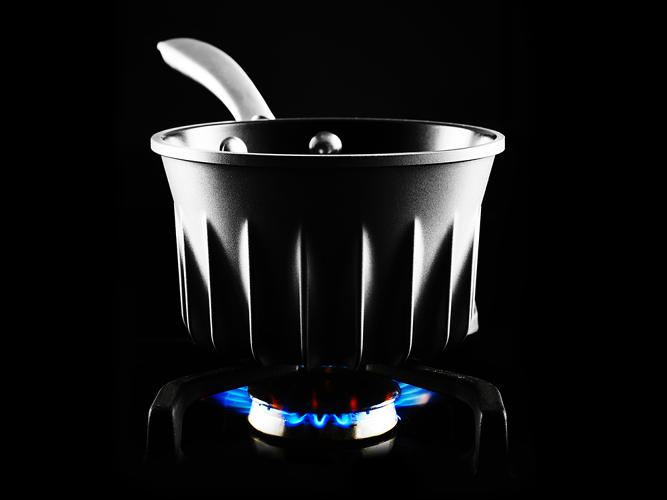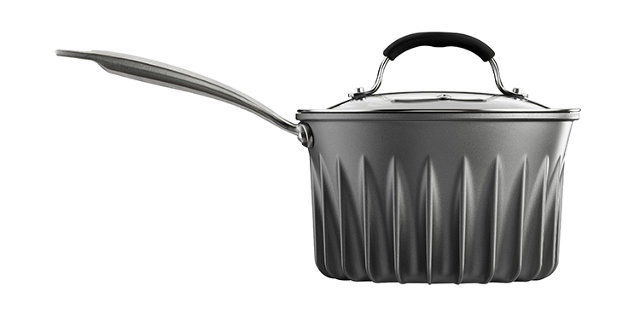
http://www.fastcoexist.com/3033435/a-rocket-scientist-designed-a-saucepan-that-boils-water-so-fast-you-can-watch-it
Rocket Scientist Designed A Saucepan That Boils Water So Fast, You Can Watch It
They say a watched pot never boils. But you’ve never watched a pot like this. Sit back and enjoy the show.
Thomas Povey‘s day job usually involves designing jet engines, not kitchen gadgets. But when the Oxford University engineering professor was on a camping trip, he started thinking about how to make a pot that could boil water faster. A few years later, the idea has morphed into a series of ultra-efficient indoor pans that save energy and time on gas stoves.
At first, Povey was thinking only about the camping market. “At high altitude, it takes absolutely forever to boil water, so improving the efficiency of heat transfer to the pan makes a big difference,” he says. By chance, other engineers were working on similar designs for camping at the same time, so he shifted his focus to the kitchen instead.

For many people, the most obvious draw of the pots and pans might be the fact that you can cook much faster with them–in tests, water came to a boil 3.3 minutes faster than in a normal pot. But the energy savings are also large.
“A conventional pan of the same size uses 44% more gas,” explains Povey. “This is quite a significant saving, but also gets people thinking about energy consumption with a product that is very visibly consuming energy–unlike the invisible energy of most of appliances like dishwashers and fridges.”
The design uses patented fins to pull heat across the bottom of the pan and up the sides. It isn’t the first time an engineer has tried to add heat exchangers to cooking equipment, but it’s complicated to get the design right. “It is harder than you might imagine to address all the challenges of performance, aesthetics, and function simultaneously,” Povey says.

It took three years of research in the lab to create a design that people would actually want to buy. One early version improved efficiency by 100%, but looked so different that the manufacturer Povey partnered with said that it would never succeed, claiming it looked “great, but insane.”
The final set of products, which includes frying pans, a stockpot, and a saucepan, will be on sale through the U.K. cooking supplier Lakeland in August.
Of course, if you really want to save energy while you’re cooking, what you’re making for dinner matters more than what you’re using to make it. Beef, for example, is responsible for five times more greenhouse gas emissions than chicken, and a couple of hamburgers might use 12 or 13 times more energy than an hour of cooking the stove itself.